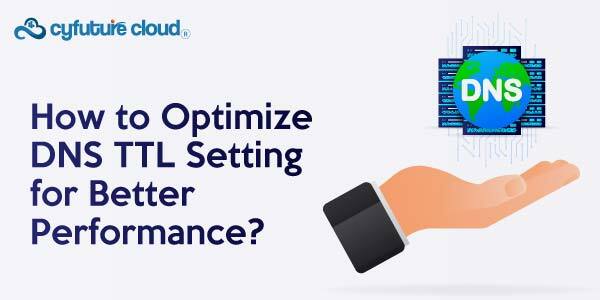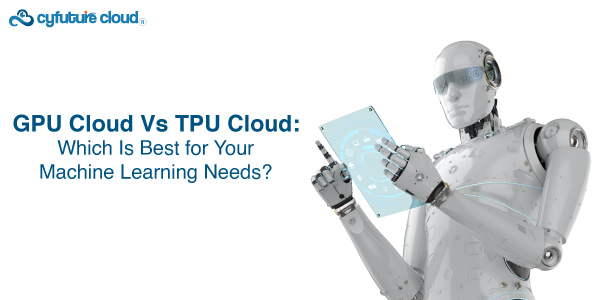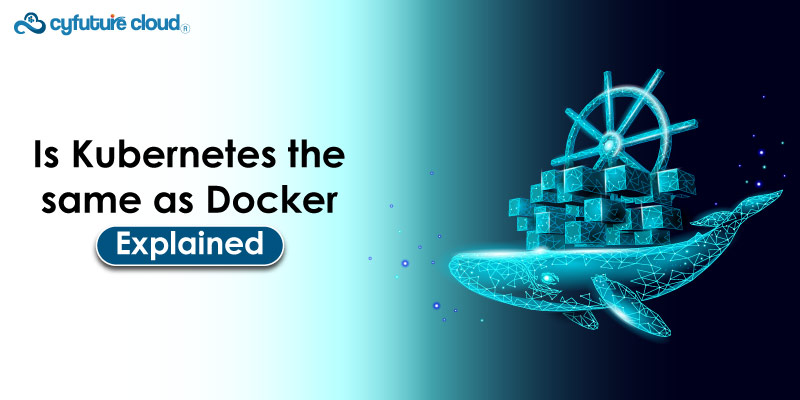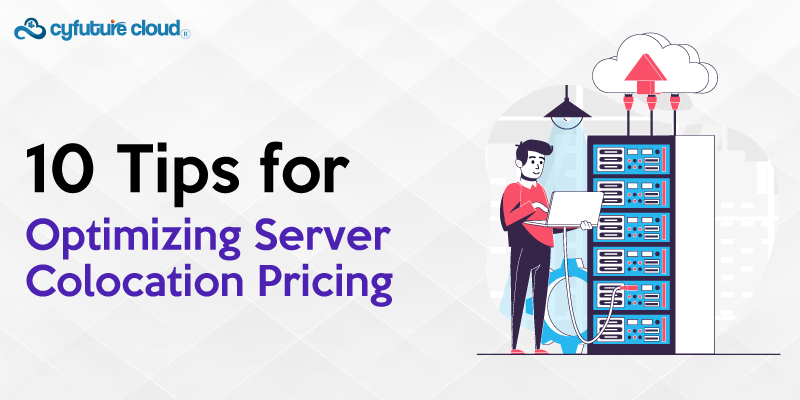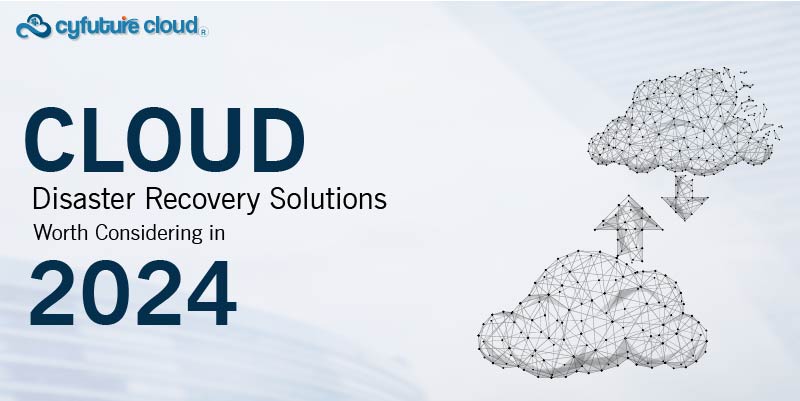Table of Contents
- What is Healthcare Hosting
- Cloud Computing: What is it?
- Cloud Computing in the Medical Field
- How is cloud computing applied in the medical field?
- Principal advantages of cloud computing for healthcare
- 1. Improved safety.
- Features of Healthcare Cloud Hosting:
- Implementing cloud computing in healthcare presents challenges.
- Conclusion
The adoption of healthcare cloud hosting is not a new development. Did You Know? According to MarketsAndMarkets, the medical cloud computing and cloud server hosting industry will reach $65 billion by 2025 with an average CAGR of 18%. The necessity for technical modernization, increased emphasis on digitization, and enhancement of healthcare procedures can all be linked to the increased adoption of cloud computing in the sector.
The ongoing pandemic simply makes the pattern worse. The introduction of previously slow-growing fields like telemedicine has increased as social estrangement has become the new norm. Despite this, healthcare professionals will keep using these tools long after the crisis has passed.
We at Cyfuture have examined the factors that make an introduction to cloud computing so alluring for the hosting healthcare cloud, and we are prepared to share our findings with you. To learn more, continue reading.
What is Healthcare Hosting
Healthcare hosting is a specialized Cloud hosting solution tailored to the unique needs of the healthcare industry, providing secure and compliant storage and management of sensitive patient data. It includes robust security measures, data encryption, and adherence to regulations such as HIPAA (Health Insurance Portability and Accountability Act) to ensure the privacy and integrity of patient information. Healthcare hosting plays a crucial role in maintaining the confidentiality and availability of critical medical records, facilitating telemedicine, and supporting healthcare organizations in delivering high-quality and secure services to patients.
Cloud Computing: What is it?
A form of on-demand collaboration known as cloud computing entails a vendor offering customers online access to reconfigurable computer resources for a negligible monthly fee. In layman’s terms, it involves offering IT services using a cloud architecture that consists of servers, storage, databases, networks, and/or applications.
The majority of the time, customers only pay for the capacities they really use. This enables cutting operating expenses, improving infrastructure management, and growing in accordance with business requirements. However, not all clouds are created equal, and not all cloud computing models are appropriate for all users. You can select the cloud computing model and type that is best for your company from a variety available in the healthcare industry.
Cloud Computing in the Medical Field
Cloud computing has transformed the medical field by offering scalable and cost-effective solutions for data storage, sharing, and analysis. Healthcare providers leverage cloud platforms to securely store and access patient records, diagnostic images, and other critical data from anywhere, facilitating telemedicine and remote patient monitoring. Furthermore, cloud-based tools enable advanced data analytics, accelerating medical research and diagnostic processes. While offering convenience and flexibility, cloud computing in the medical field also raises concerns about data security and privacy, necessitating robust measures to adhere to healthcare regulations and protect sensitive patient information.
How is cloud computing applied in the medical field?
Clouds are well-established and ubiquitous tools nowadays. Of course, there are implementation-specifics in every sector. The healthcare industry has led the way in several developments. Likewise with cloud computing.
Democratizing and guaranteeing access to this information is crucial in a sector that produces large volumes of data every day. What causes this to occur? Let’s start by examining the advantages of cloud computing in medicine to provide a response to this query.
Principal advantages of cloud computing for healthcare
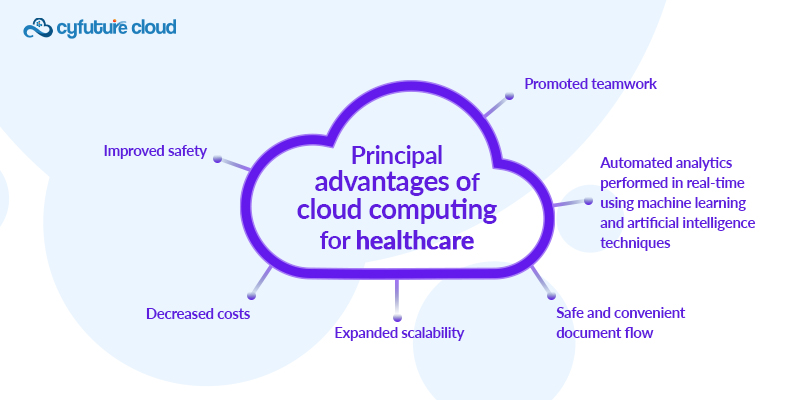
The use of cloud computing in the healthcare industry is beneficial in many ways, including streamlining the development and upkeep of telemedicine apps and facilitating the safer and easier transmission of medical records. The following are the main benefits of cloud computing for healthcare:
1. Improved safety.
The European General Data Protection Regulation (GDPR), the US Health Insurance Portability and Accountability Act (HIPAA), and the CSF HITRUST Alliance industry standard all support and regulate the protection of users’ personal information in online services.
2. Decreased costs
Healthcare companies can save money on pricey systems and equipment since modern cloud computing services operate on flexible subscription models. Using a dedicated cloud server with pre-established capabilities is one way to increase resilience.
3. Expanded scalability
The allocated processing power can be dynamically increased or decreased depending on the current load and requirements thanks to cloud technology.
4. Safe and convenient document flow.
The service is available from any internet-connected device and allows for the storage and analysis of electronic health records, patient lists, test results, and other relevant information. It also offers a wide range of security and access rights choices.
5. Automated analytics performed in real-time using machine learning and artificial intelligence techniques.
These features can be crucial for supporting massive database administration, clinical decision making, and treatment time reduction due to the busy schedules of healthcare workers.
6. Promoted teamwork.
Healthcare professionals can exchange knowledge and expertise using a number of means by using cloud-based messaging and collaboration services, which will both raise the quality of healthcare services and advance the medical sciences.
The healthcare sector benefits from cloud computing’s global remote access, automated backups, and quick recovery. In order to guard against illegal access, the majority of cloud service providers also provide risk management and monitoring services.
These are some advantages of cloud computing in the medical field. Let’s talk about risks and difficulties now.
Features of Healthcare Cloud Hosting:
| Aspect | Description |
|---|---|
| Security Compliance | Adherence to industry standards (HIPAA, GDPR) |
| Encryption | Data encryption at rest and in transit |
| Access Controls | Role-based access, authentication mechanisms |
| Data Backup | Regular backups, disaster recovery planning |
| Scalability | Ability to scale resources based on demand |
| Performance | Reliability, low latency, high availability |
| Healthcare Specific Tools | Integration with EMR/EHR systems, PACS, etc. |
| Audit Trails | Logging and tracking of user actions |
| Service Level Agreements | Defined uptime, support, and response times |
| Compliance Reporting | Generation of compliance-related reports |
| Cost and Pricing Model | Transparent pricing, cost-effective solutions |
Implementing cloud computing in healthcare presents challenges.
Users’ mistrust of the security and privacy protections offered, organisational inertia, the loss of data control, and lax safety standards are some of the major obstacles facing cloud computing in healthcare.
The clause allowing the customer to audit and manage their data freely may occasionally be missing from the service agreement. There are situations when the provider cannot adhere to the necessary compliance regulations (for example, safety standards, contracts, or policy change statements). Certain common services are occasionally not available to customers (for example, credit card payments).
Some cloud service providers overuse computing resources, limit access, or employ outmoded hardware or software due to intense competition. Rarely, users could not have access to the virtual architecture of the service being offered.
One of the most major issues is data blockage. Cloud consumers occasionally have the option of moving their data or services to an other provider or the on-premise IT environment. Sadly, the majority of cloud infrastructures offer very little interoperability.
Large amounts of data may need to be frequently uploaded or downloaded by some users (like biological research laboratories), but this may be hindered by a lack of available physical bandwidth. Debugging issues in large dispersed infrastructures is also more challenging.
Open-source management interfaces, inadequate encryption key management, and privilege misuse pose the biggest hazards associated with cloud computing in the healthcare industry. Cloud computing is often accessible to a wide range of clients. Ineffective resource distribution by the vendor may result in security and performance problems.
Conclusion
The field of healthcare as a whole reaps significant benefits from current technologies. Its advancement is significantly aided by the sciences of optics, nanotechnology, robotics, machine learning, and other fields. One of these scientific domains is cloud computing, which enables cost savings, improves the safety and security of the data accumulated, analyses enormous information arrays in real-time, and offers many other significant and minor advantages.
In this post, we gave a quick definition of cloud computing, talked about its difficulties, and gave some examples in the field of healthcare.
Send this to a friend

 Server Colocation
Server Colocation CDN Network
CDN Network Linux Cloud Hosting
Linux Cloud Hosting Kubernetes
Kubernetes Pricing Calculator
Pricing Calculator
 Power
Power
 Utilities
Utilities VMware Private Cloud
VMware Private Cloud VMware on AWS
VMware on AWS VMware on Azure
VMware on Azure Service Level Agreement
Service Level Agreement 




